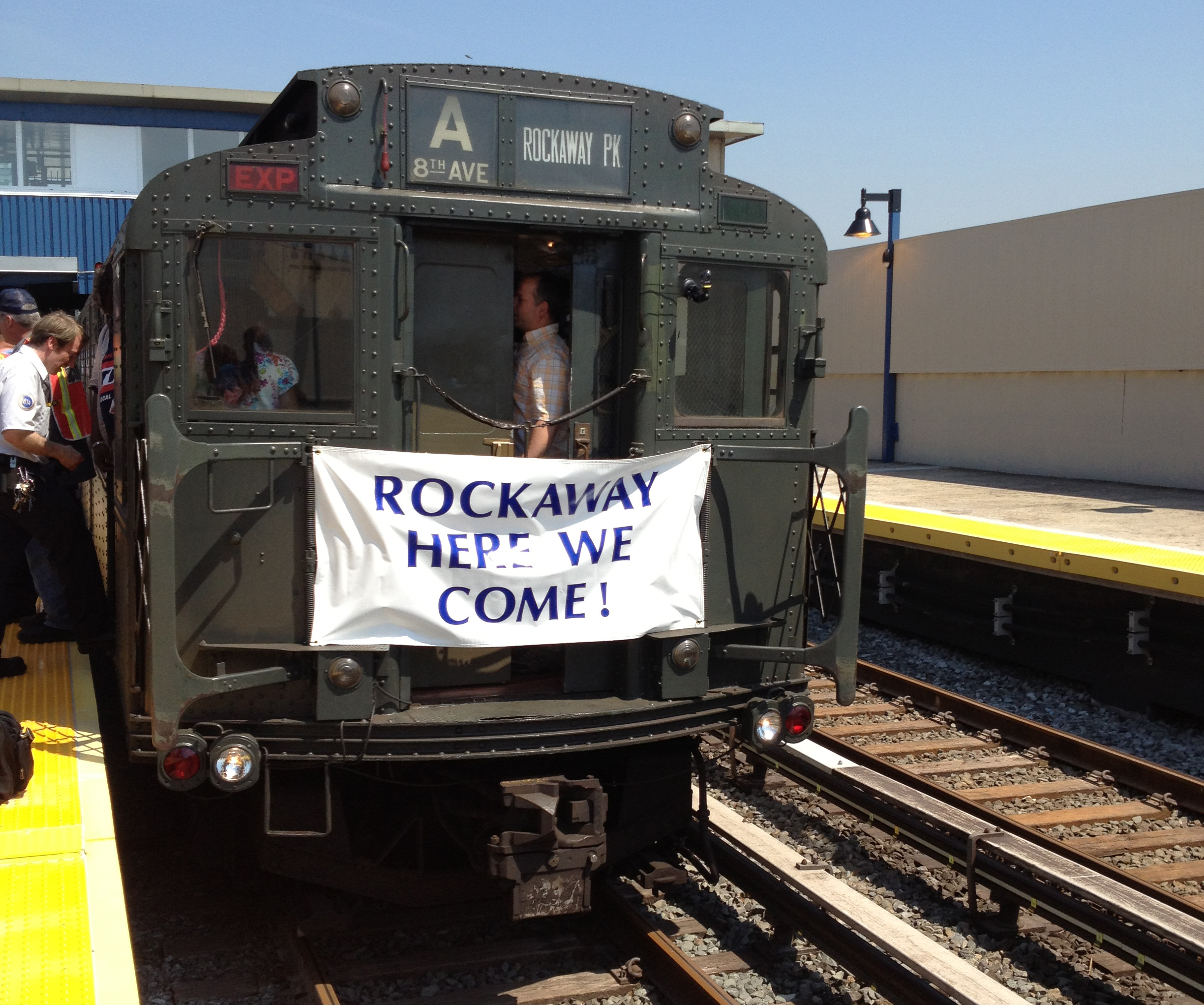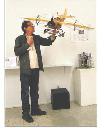At the bus station in Roslyn Virginia dressed in my Panama hat, yellow vest over a gold sweatshirt, black pants and a powder blue pullover jacket draped over my shoulders I waited for the bus to take me to New York. A woman I later learned was a retired hostess for American Airlines who was also taking the bus to NY approached me and asked me if I was an Actor.
Taken aback I answered “No, why do you think so?”
“You dress so very differently than anyone else around here,” she explained.
Upon arriving in New York City’s Penn Station, I hauled my luggage into the subway station. I intended to take the A train. For those of you who understand the allusion, you are older than you think.
I suddenly felt I had come back home. The subway and its denizens are part of the old NY that I remembered growing up in. While standing in the center of the platform, no one else within 10 or fifteen feet of me, I saw a woman, obviously a New Yorker since she was striding along the center of the platform rapidly and purposefully. When she got up to me she shouted, “Choose one side or the other. Don’t stand here in the middle.” She then walked past me and down the platform shaking her head and muttering to herself. I really was home.
New York is not a city like most others whose class distinctions are horizontal, based upon the neighborhood where you live. It is vertical. There are those who travel by subway, those who travel by surface transportation and those who live above the third floor..

Map of the New York City Subway system (Photo credit: Wikipedia)
There are two notable things about the New York Subway. The first is everyone looks different. Not like in the rest of the world where no-one but identical twins look exactly alike, but really different where everyone appears to be a member of a one person tribe where ones idea of conformity is to look different than anyone else in some way.
The other thing is weirdness. In New York weirdness is not something that distinguishes a person from the general population as odd. In NY, especially on the subway, weirdness is its own ethnic group.
For example, while riding the subway later in the day a man of about 45 or so, normal looking, slender with curly sandy hair wearing casual clothing more traditional than most others riding in the car with us, sat down across from me. He had the standard wires hanging from his ears leading to a mobile device of some sort. He then proceeded to remove his athletic shoes and socks and began cleaning his bare feet of something that only he could see. After doing this awhile, he slowly replaced his socks making sure they were absolutely to his liking. He then replaced his shoes tieing and re-tieing them several times. No other passenger even looked at him. They either had their eyes closed, were fiddling with their smart phone or reading. Yes, people on the subway read. I told you they were weird.
My hotel is located in a part of Brooklyn that has no name. In this neighborhood downscale would be an improvement. I expected to be mugged one evening on the way home .
After checking in, I returned to Manhattan and met my sister near Madison Park on 23rd St. and Broadway. We went to Eataly. Eataly is part of the new New York. It is a large warehouse filled with only Italian food and restaurants; Little Italy without the automobiles and twice as expensive. We ate at a fish restaurant. We ordered Sicilian style Scallops and Swordfish washed down with Prosecco. It was very tasty although the size of the portions was barely enough for a starvation diet and the Sicilian part nonexistent.

While eating I noticed the noses. New Yorkers have real noses; immense honkers, beaks like deadly hatchet blades, rapier like pointed sniffers poised to attack, nostrils that appeared as though God himself had inserted His fingers and pulled them heavenward or spread them across the face almost reaching the ears like a second smile, as well as unlimited other shapes and sizes. Thais have no noses. Even in California noses appear genteel as though modesty demanded they be lopped off or at least discreetly hidden like ones sexual parts suggesting only a mysterious potential. Not so among New Yorkers. The city is a riot of pornographic proboscises, a symphony of shnozzolas.

The Strand Book Store, Manhattan. (Photo credit: Wikipedia)
We later walked down Broadway toward Washington Square. On 12th Street we passed the Strand Book Store. About a decade ago, Don Neuwirth told me it had closed. That news ended NY for me. I loved the Strand. Even while I lived in California, I used to fly back to NY periodically and buy four or five hundred dollars worth of books and have them sent back to California.
I used to hang out there for hours on end in the basement where few people ventured. The basement was the repository for books no one read. I always hoped someone would offer me a job sweeping floors in the place. There was one spot in the furthest part of the cellar I especially liked. It was where they would throw unwanted stuff that, for one reason or another, they did not throw into the garbage; broken chairs, boxes of books not yet opened, books no one wanted and so on. I would often sit back there and read. No one came there, ever. I dreamed of having a cot and living there, sweeping floors during the day and perhaps shelving books and reading at night.
Katy, my niece, a student at NYU, joined us. She and my sister eventually left, leaving me alone to prowl the store. For the next hour or so I went through the stacks and through the one dollar bins outside. I knew I could only afford one book. The number of choices however drove me to a state of indecision and anxiety that caused me to leave the store without a purchase and return to my hotel.
On the subway ride home I contemplated the current fashion preferences of New Yorkers. Men mostly dressed in the ubiquitous bagginess that men all over the world seem to prefer to wear at all times except when they are wearing sports gear or in bed. They all look like ambulatory piles of soiled laundry. In NY, the predominant color is black. The windows of the GAP and Banana Republic stores in the City lacked the cheery colors of the GAP or the earthy browns and yellows of Banana Republic we know in California and instead appeared committed to demonstrating the latest fashions suitable for attending funerals.
Woman’s fashions were different as they almost always are. The dominant outfit featured black tights and nothing else until they reached the waist and disappeared into various layers of fabric. They all appeared as though they were naked below the waist.The result was that their legs seemed almost abnormally long, their line not being cut off as usual by shorts or skirt somewhere around mid thigh. Tall slender women whose lower appendages often began in black spike heeled ankle boots and ended just above the waist in a ball of fabric, appeared to me like those cartoon birds, a puff-ball on top of long pipe-stem legs.
It was quite late when I arrived at my stop. I had prepared myself to be mugged and almost welcomed it. To my surprise about 20 other people exited at my stop with me and when we arrived at street level, I found the place awash with people. This also is the new New York.
The next day I met my sister at the World Trade Center Memorial. Several years ago there was a nationwide competition to choose the design for the memorial. Barry Grenell was part of a group of non-profits who had gotten together to submit a proposal. I was included as an advisor. The design was essentially a series of contemplative gardens and small fountains and a large billboard-like structure the surface of which would shimmer in the breeze. We did not win. The award went, as expected, to a standard design firm.

Mary at the WTC Memorial.
Maya Lin who won the competition to design the Vietnam Veterans Memorial in Washington DC stunned the art world by rejecting the bombastic approach to memorials by producing a design of elegant simplicity that placed those who were being memorialized foremost and her structure the humble and elegant backdrop. As a result of the memorial’s success, the design world fell in love with her reductionist approach. Alas, they soon forgot the design’s essential humility and dignity.
The World Trade center takes this reductionist approach and infuses it with gigantism while forgetting the humanism of Lin’s design. What is worse it appears almost to forget victims themselves while memorializing the fallen buildings instead. The victims names are difficult to read cutouts into the balustrade surrounding two gargantuan reverse fountains marking the locations of each tower. The names virtually disappear as the viewer is compelled to ignore them and stare at the spectacle beyond; two vast squares with water cascading down bare walls to pool below for a moment before tumbling into the depths of a smaller square far below where it vanishes from view. The fountains exclude the public from a greater part of the site. They are bereft of either warmth or interest other than the wonder of their size and engineering. A collection of well ordered trees and a few black stone blocks set in orderly rows upon which a visiter may uncomfortably rest, make up much of the rest of the site. It was a place I felt I was being encouraged to view the extravaganza and hurriedly move on. I never felt invited to consider or contemplate what it was all about.

One of the gigantic fountains at the 9/11 Memorial at WTC.
After that we went to lunch at Chelsea Market another example of the new New York. The old Nabisco factory and warehouse has been remade into a vast food emporium. We ate a lobster roll from one of the restaurants and listened to a cellist play more or less (depending on your age) contemporary music.

The Cellist at Chelsea Market playing “La Bomba”
High Line Park 10/10/12
There are few examples of urban architecture that can be considered masterpieces of urban design. In my opinion, High Line Park is one of them. Built upon abandoned elevated RR tracks it embodies everything several of us urged on urban planners many years ago and more; more clever and more imaginative than any of us could have fo

Pookie at High Line Park
One thing that I loved is a small arena like sitting area where the tracks crossed over 10th avenue. It is like sitting above a brook or a stream except in this case the stream is the ever-varied patterns of traffic as it scurries away from you eventually to disperse and disappear from view somewhere in upper Manhattan.

The “window” overlooking 10th Avenue.
Alongside the park, developers taking advantage of the immense value their properties were gifted with by this public-private public benefit venture, have begun construction of high-rises or conversion of the district’s warehouses into incredibly expensive residential units. Many of them proudly and greedily proclaiming their proximity to High Line Park (As though they did it all by themselves).

Some of the new buildings built to take advantage of their location to High Line Park. The High rise on the left was designed by Frank Gehry
After Mary left to go to a meeting, I walked over to the Hudson River and ambled down the new Riverside Park, constructed as part of reconstruction of West-side highway after they took down the elevated roadway. The removal of the roadway has allowed conversion of the derelict port-side warehouses to residential. It appears these two neighborhoods (The Chelsea waterfront and High Line Park areas) are becoming part of the “New” New York.
The shoreline park is nowhere as well planed as High Line Park. Its layout, an unimaginative unitary government type design, would be considered bleak but for its location. It will not enjoy the popularity of High Line Park, in my opinion, until the upgrade of the nearby warehouses are fully completed, filled with people and the push-cart vendors move into the park.

Battery Park City walkway
As I got closer to Battery Park City, my vision of what an urban waterfront should be, the sameness of the waterfront park began to change into a more varied and interesting landscape.
Within Battery Park City, I came upon one of the most interesting sights of the city. Built upon an inclined plane was a memorial to the victims of famine in general and the Irish famine in particular. A cottage from Ireland abandoned during the famine was imbedded into what was made to look like an irish hillside. I thought it honored those it sought to remember much more that the WTC memorial.

The memorial to the victims of the Irish famine.


















